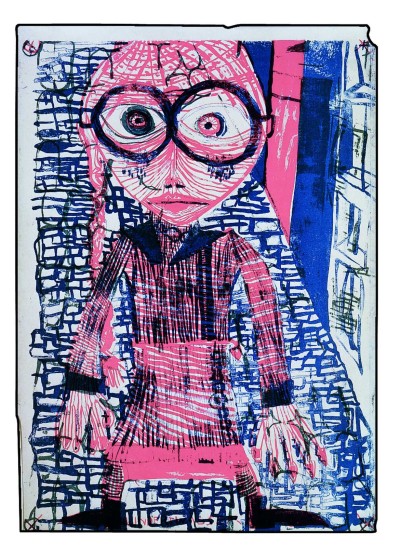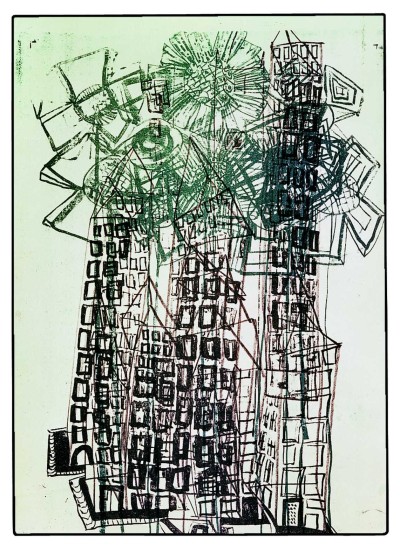Hundertwasser's original graphic works
An experimental start with the Art-Club Rotaprint portfolio in 1951
24. February 2021

Hundertwasser's activities in printmaking had an unorthodox beginning, as his first printed art works were not created using one of the typical techniques such as silk screen, etching, woodcut or lithography but using a technique completely unusual for print making.
“Alfred Schmeller (Vice-President of the Art-Club, 1951/52 - editor's note) wanted to produce cheap graphic portfolios that anybody could afford. The painters Josef Mikl and Johann Fruhmann and I think Kurt Moldovan, too, also agreed to it”, Hundertwasser noted in his catalogue raisonné.
Rotaprint had been conceived simply as an office copier process for monochrome printing. Walter Koschatzky, author of the first annotated catalog raisonné for Hundertwasser graphic works, assessed that the Art-Club prints were significant for the artist’s later work in printmaking. He was not satisfied with a monochrome print but used two or three foils in order to have several colours printed. According to Koschatzky, from the beginning Hundertwasser strived for strong visual effects and new expressive possibilities for his original graphic art works.
The Rotaprint portfolio was not successful, the demand was modest and for a long time Hundertwasser thought that printmaking was not for him. Despite his initial reservations, Hundertwasser created many outstanding graphic works. Both experimental and effective, his graphics were sensationally successful.
Fig: 132 / III Girl with eyeglasses and 132 / VI High Houses with trees (two of the 9 sheets)
*
